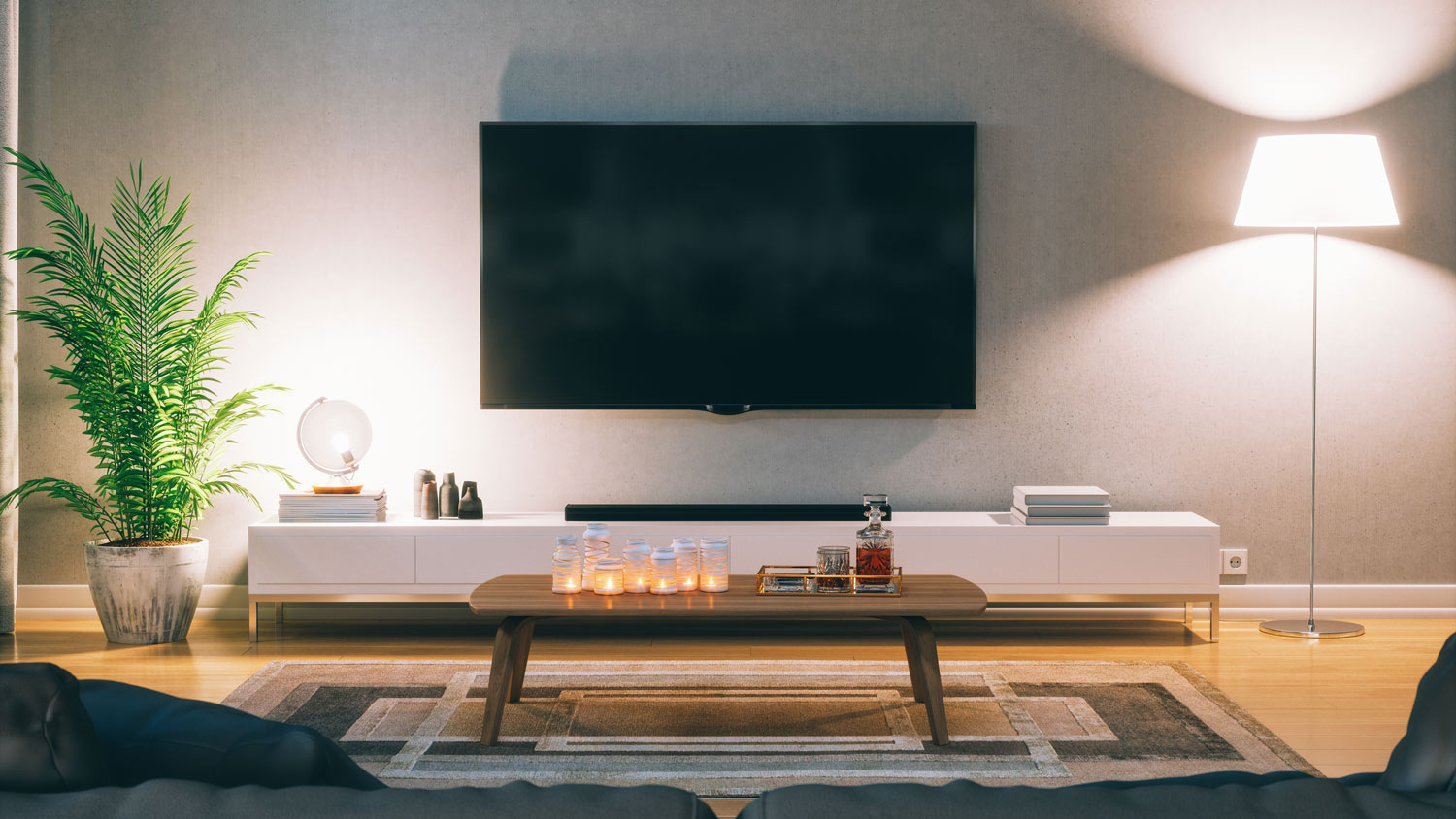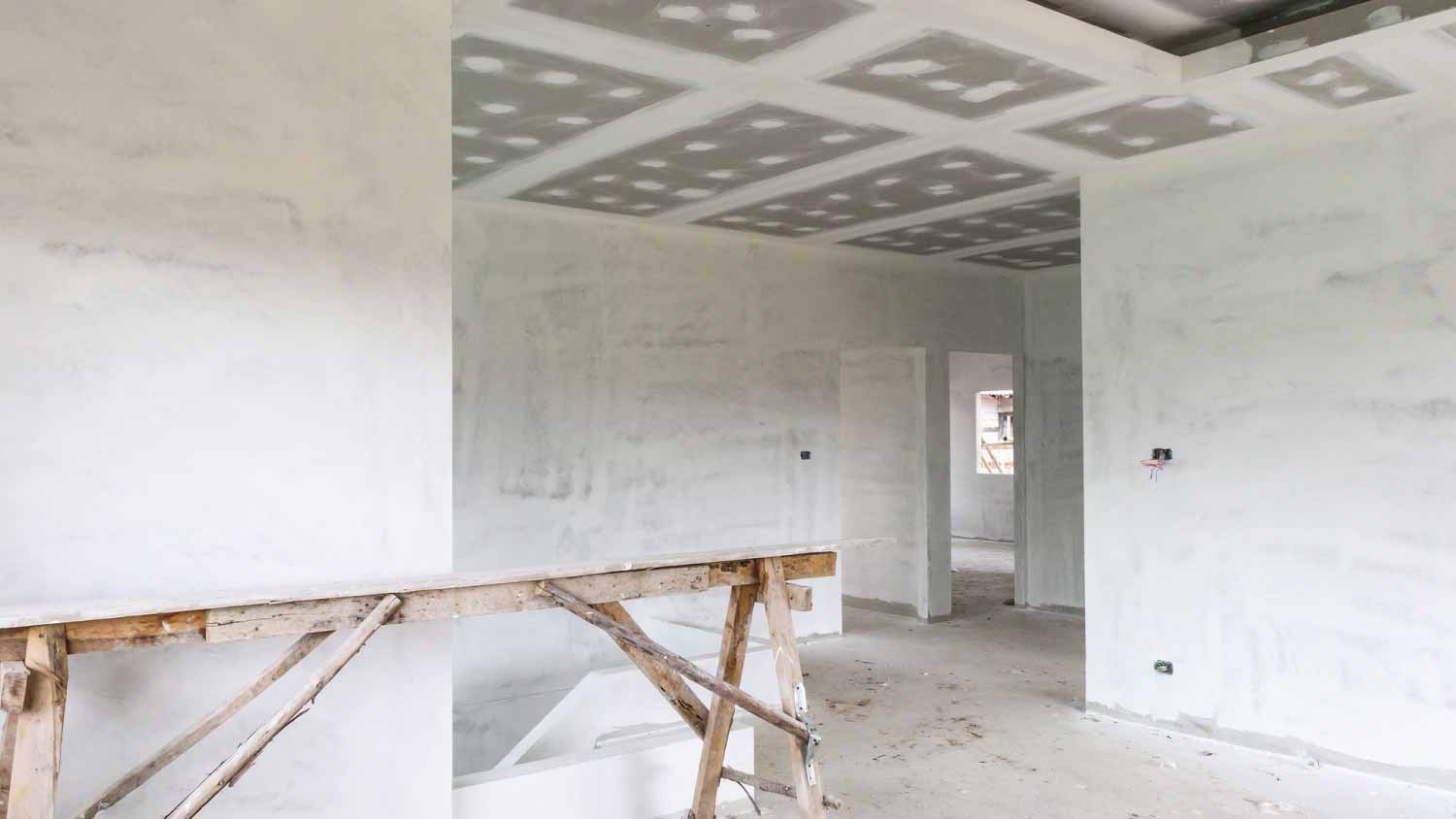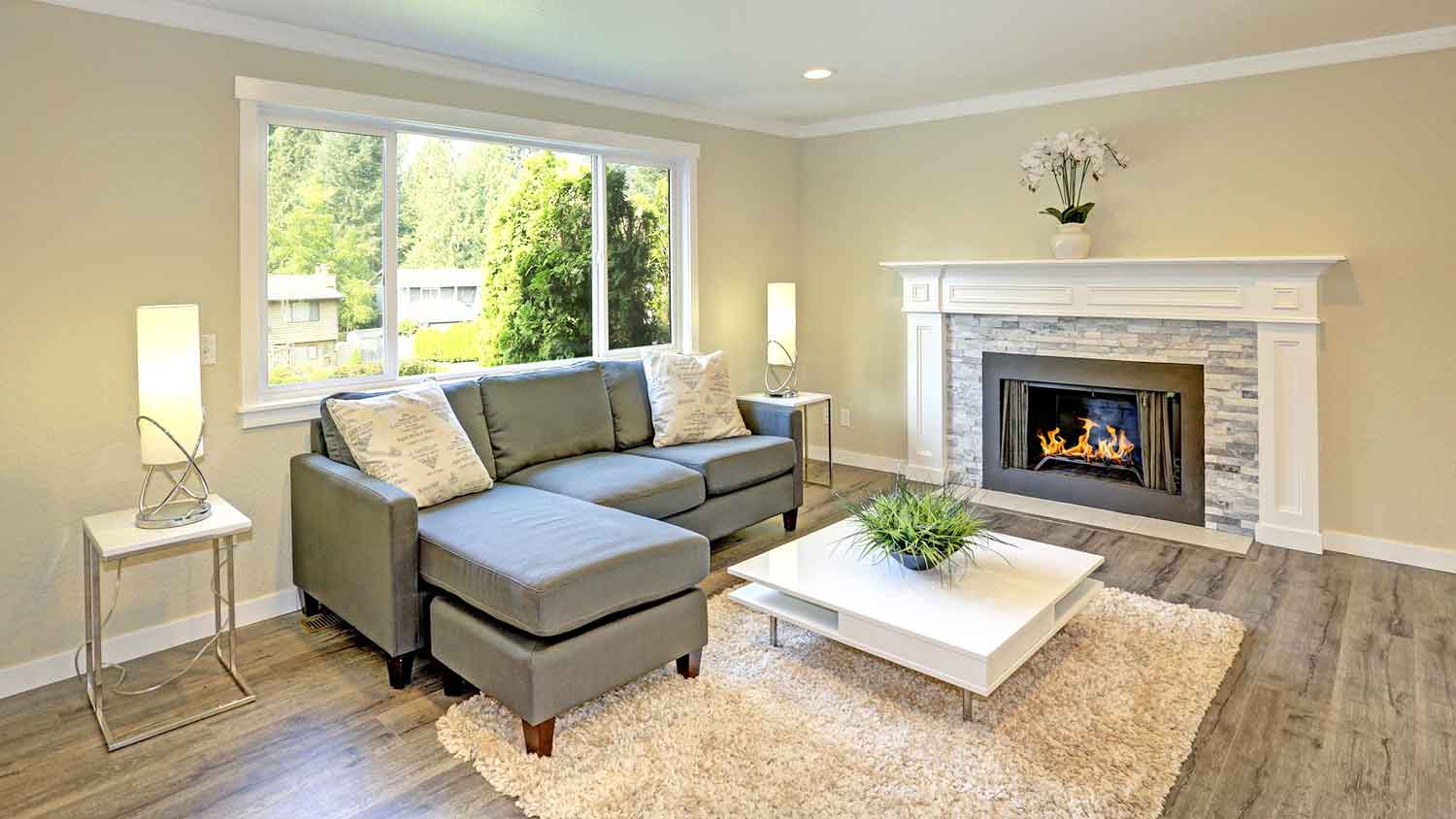What’s the Difference Between Greenboard and Drywall?
Using the right materials is a must to keep your walls standing


Greenboard and drywall both have an inner core of gypsum.
Its waxy, green cover separates greenboard from drywall.
Greenboard is more water-resistant than regular drywall.
Drywall is cheaper to install compared to greenboard.
Selecting the best material will depend on its use and location.
When it comes to greenboard vs. drywall, choosing the right material for your project is important for longevity and functionality. These materials are widely used in residential construction and share several similarities, including an inner core made of gypsum, a natural mineral in crystalline form. However, its seafoam green color and resistance to water easily set greenboard apart from drywall. Learn more about the pros and cons of each material, as well as their key differences.
Greenboard vs. Drywall: Key Differences
The main difference between greenboard and regular drywall is that greenboard features a waxy, water-resistant seafoam green paper cover on one side. Another key difference lies in where—and how—the materials are used. For example, greenboard is best used in spaces that are prone to dampness as the material can withstand the moisture better than regular drywall.
What Is Greenboard?

Greenboard, often referred to as green drywall, is a specific type of drywall that’s commonly used in rooms that experience high humidity levels, such as bathrooms and laundry rooms. While it's a type of drywall, its waxy, water-resistant seafoam green paper that covers one side of it, is what sets it apart from regular drywall. This difference in color serves two main purposes:
It signals to the installer which side should face outward.
It’s an identifier that this is a moisture-resistant drywall.
An important distinction to note is that greenboard is water-resistant, but it is not waterproof. You should avoid using it in areas of your home where there is standing water, such as a shower stall or indoor pool area. Instead, it’s best used in rooms that see occasional dampness or splashes, like kitchens or garages.
| Pros | Cons |
|---|---|
| Cost effective | Susceptible to damage |
| Hinders mold growth | Not ideal for wet areas |
| Easy to install | Installation requires special handling |
| Moisture resistant | Limited resistance to water |
Best for:
Areas of a home with high humidity levels.
Upgrading to a moisture-resistant material without completing an entire remodel.
Areas where mold and mildew growth are a concern.
Pros of Greenboard
A defining characteristic of greenboard is its resistance to moisture, making it a great material to use in a kitchen, basement, bathroom, garage, and laundry room. This material can absorb water over a period of time before it breaks down, which safeguards against potential water damage. Overall, this moisture resistance helps prevent the growth of mold and mildew, which can negatively impact the air quality of your home.
Cons of Greenboard
Greenboard is lauded for it’s resistance to water; however, the material is not completely waterproof. In fact, severe or prolonged exposure to moisture can cause greenboard to break down, leading to a necessary replacement. In a worst case scenario, degraded greenboard can cause structural issues. From a technical standpoint, installation is relatively simple; however, it’s important to pay special attention to the waxy, water-resistant seafoam green covering, so that it’s not damaged in the installation process. It’s also important to know that some contractors are phasing out the use of greenboard for more durable materials, such as cement board and purple drywall.
What Is Drywall?

Drywall is a construction staple because of its affordability, durability, and easy installation. Drywall is often used as a convenient alternative to plaster to form flat surfaces like walls and ceilings. There are several types of drywall, including the aforementioned greenboard. Conventional, regular drywall is often referred to as white board, and it’s the most common type used in home construction. Typically, this type of drywall is white on one side and brown on the other side; it comes in varying sizes that range in thickness from 3/8-of-an-inch thick to 1-inch thick.
| Pros | Cons |
|---|---|
| Versatile | Susceptible to moisture and mold |
| Affordable | Limited insulation |
| Easy installation | Damages easily |
| Easily repaired | Heavy material |
Best for:
Walls and ceilings in most rooms.
Price-conscious projects.
Adapting the look of the finished wall.
Quick wall repairs.
Pros of Drywall
Conventional drywall has several selling points, including cost effectiveness and versatility, that make it a go-to construction material. As an affordable option, it ranges in price from $40 to $70 per panel for DIY projects. (To hire a pro, the average drywall installation cost is $2,020, or between $1.50 to $3 per square foot.) Drywall is also a very adaptable material with aesthetics and sizing. It can be painted, sanded, wallpapered, and textured to achieve different looks. And drywall can also be cut into custom sizes, making it a great option for fitting nearly any area or making a quick repair. With the right tools and expertise, drywall can be relatively easy to install, too. Before DIYing a drywall installation, it’s best to understand the process and what challenges you might face.
Cons of Drywall
For some DIYers, drywall can be easy to install, depending on the scope of the project. However, drywall sheets can be relatively heavy and cumbersome to manage, as a standard 1/2-inch thick sheet measuring 4 foot by-8 foot can weigh up to 60 pounds. The size and weight can make installing drywall a tedious, time-consuming process. If you will not DIY, it is critical that you hire the right drywall contractor, as a poor installation can cause issues with the drywall joints and tape later on. Drywall also offers limited insulation and is prone to moisture and mold when installed in a damp or wet area. Because of this, drywall is also susceptible to damage (yet, it can be easily repaired).
Greenboard vs. Drywall
Options and Customizations: Tie
Greenboard and drywall both offer varying levels of customization when it comes to aesthetics. For example, both materials can be painted and textured. You can also add wallpaper to both greenboard and drywall.
Durability: Greenboard
When exposed to humid conditions, greenboard fares better than regular drywall, which can deteriorate over an extended period of time when exposed to constant water. Greenboard has the added advantage of a waxy, thick seafoam green coating, which gives it a water-resistant element.
Price: Drywall
Greenboard costs about 20% more than regular, conventional drywall. However, depending on your project, greenboard might be worth the extra expense because it could prevent water damage and mold and mildew growth down the line.
Ease of Installation/DIYability: Drywall
For those who may be wondering how hard it is to hang drywall, take comfort in the fact that the installation process is nearly identical for drywall and greenboard. But, overall, drywall is easier to install with the right tools and knowledge. Greenboard can be more fragile during installation since the green, papered side faces outward. Greenboard is resilient, but be mindful when securing it with nails or screws. A local drywall installer can answer your installation questions and quickly and efficiently install regular drywall and greenboard in your home.
Length of Life: Tie
Generally, greenboard lasts longer than drywall—especially when exposed to moisture over time. However, it’s important to remember that longevity depends on the environment. For example, drywall could have the same longevity as greenboard when installed in an interior space that’s not prone to high humidity or occasional splashes of water.
Bottom Line: Which Is Better?
Greenboard and conventional, regular drywall share several similarities—especially since greenboard is a type of drywall. Choosing the best material will depend on the scope and location of your project. Before starting your project, consider any environmental factors that will impact the amount of moisture the space will experience. Generally, greenboard is more expensive than regular drywall, but the cost will be well worth it if the material will be hanging in a moisture-prone space like a laundry room.





- Purple Drywall vs. Green Drywall: Pros, Cons, and Costs
- 5 Types of Drywall and the Use Cases for Each One
- What Is Drywall Made Of?
- Everything You Need to Know About Drywall Thickness and Size Options
- Who Installs Drywall? Get the Right Pro for the Job
- How to Dispose of Drywall When You’re Done With a DIY
- Drywall Fire Ratings: Is It All Fire-Resistant? Here’s What to Know
- When Should You Hire a Pro for Drywall Repair vs. DIY?
- Lightweight vs. Standard Drywall: Which Is Better?
- Type C vs. Type X Drywall: What’s the Difference?










